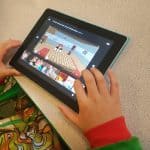Online Behaviour and Cyberbullying
1.4
The Citizenship strand is slightly different from the other three in that it focuses as much on information as it does on skills. There are also Online Safety year-by-year schemes of learning created by South West Grid for Learning on behalf of the Welsh Government which cover much of the Citizenship strand. This resource can be found on Hwb (link below)
We therefore restrict ourselves in the Citizenship strand to a few quick suggestions for activities, focusing on those few aspects of Citizenship not covered by the SWGfL schemes.
Activity Suggestions
Explain that we can connect locally and globally with digital technology and explain differences between online and offline communication.
- Lesson 5, Year 1 of the SWGfL Online Safety Resource for Wales deals with 'Sending Email'.
- Discuss how online communication makes it much easier to contact people who are far away.
Recognise different symbols
- Show them the Padlock symbol that appears by the address bar when you're on a secure website. What does this mean? Explain that it doesn't mean the site is totally safe and that we can share our information safely. It just means that the site is harder for bad people to hack.
- Show a range of emoticons (emojis). What does each one represent? Point out that some emojis may mean different things to different people (e.g. is it crying of sadness, or laughing?) We have to think carefully about what the person reading our messages will think the emoji means.
- Write or type kind messages to friends, adding an appropriate emoji from a selection the teacher has chosen for them.
Use appropriate words and feelings
- Regularly discuss mean words and deeds and why they shouldn't be used or done. Ask pupils how they feel if somebody called them a mean word, or wrote a mean word about them on a piece of paper. Point out that mean words are just as mean when they're written down. You will probably already be dealing with this in your PSE lessons.

